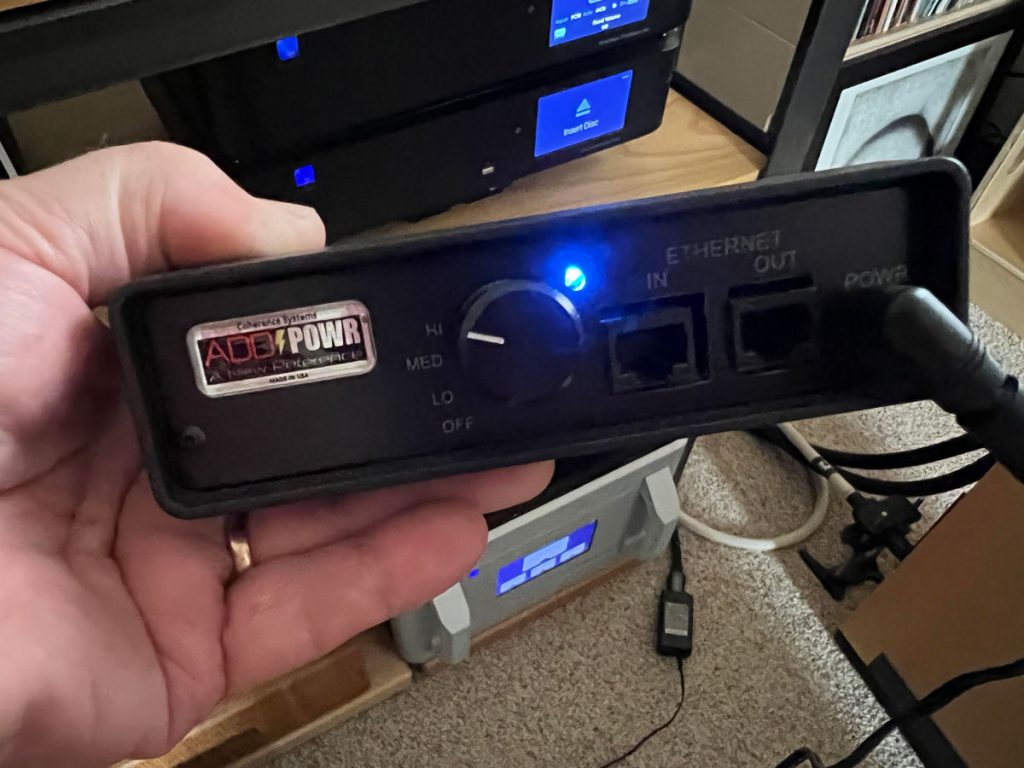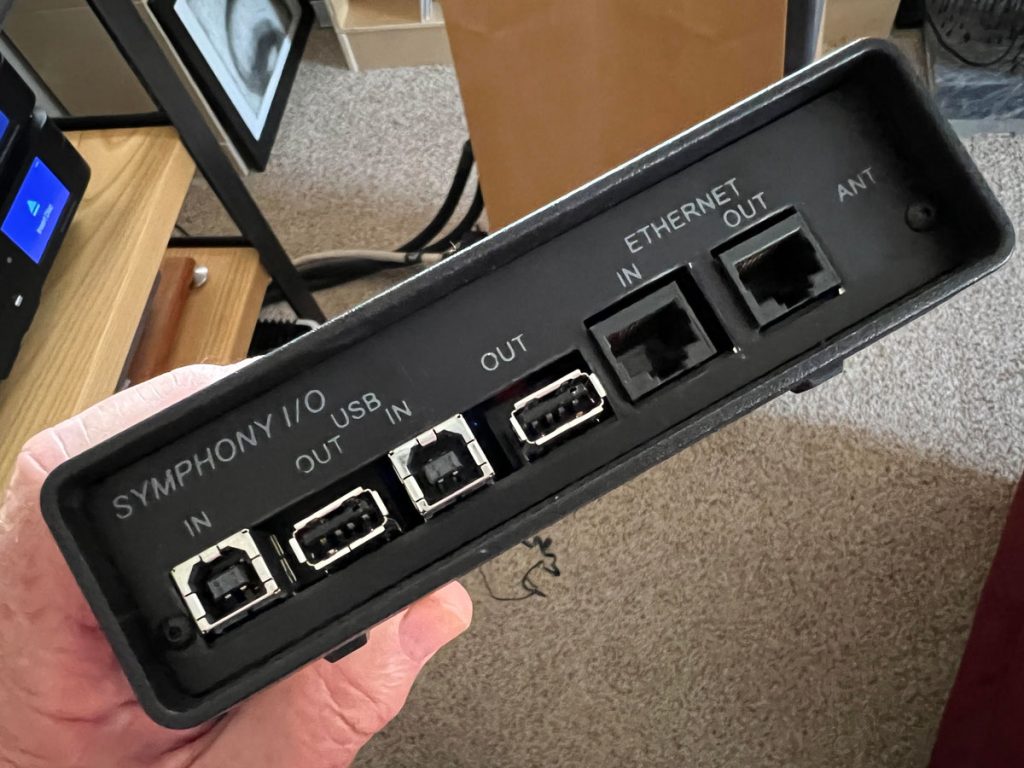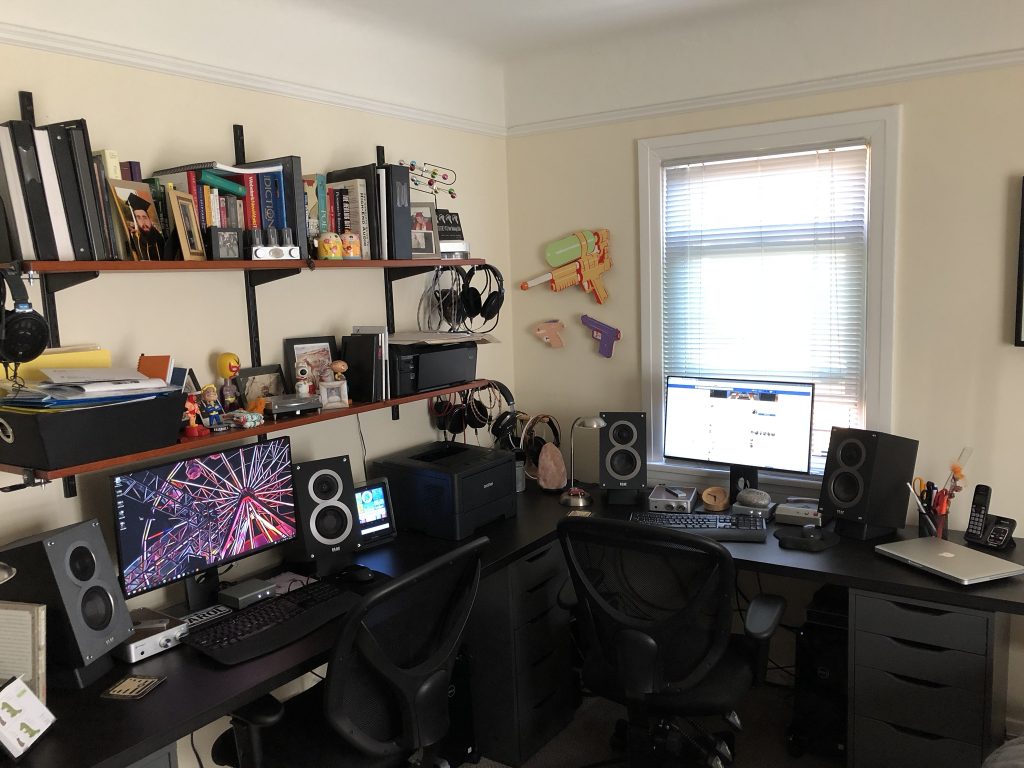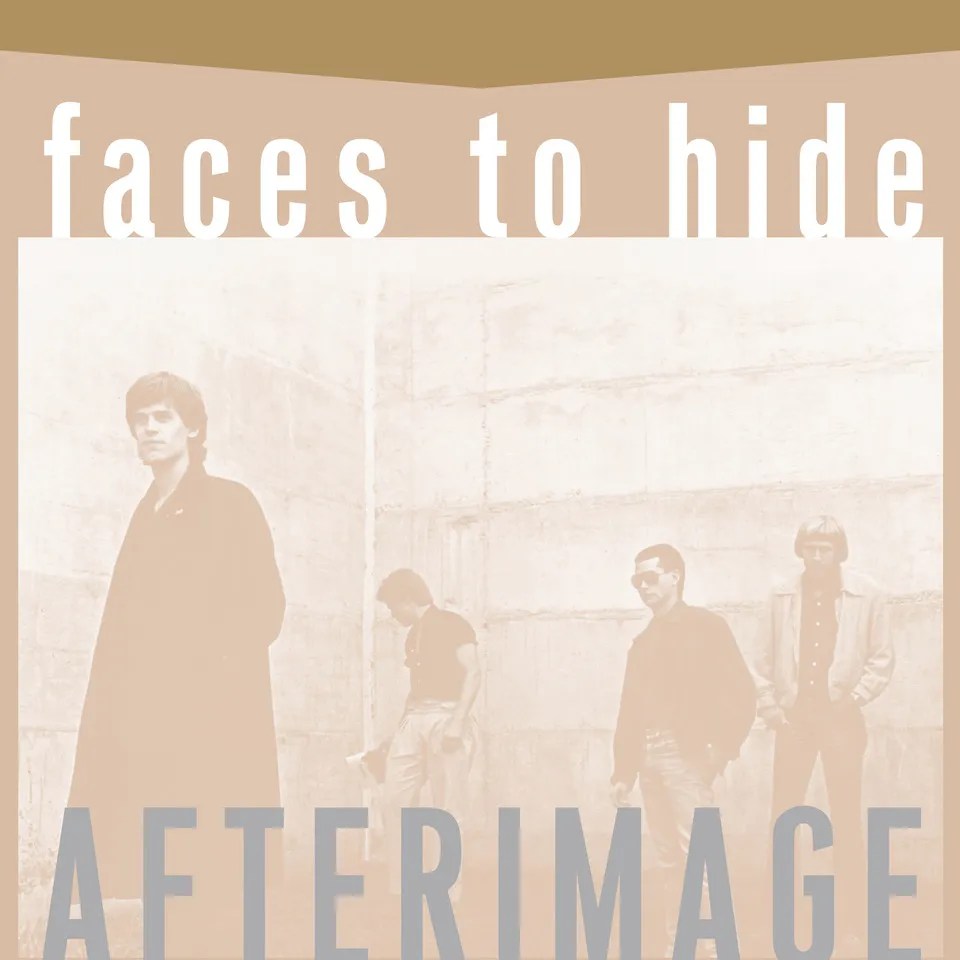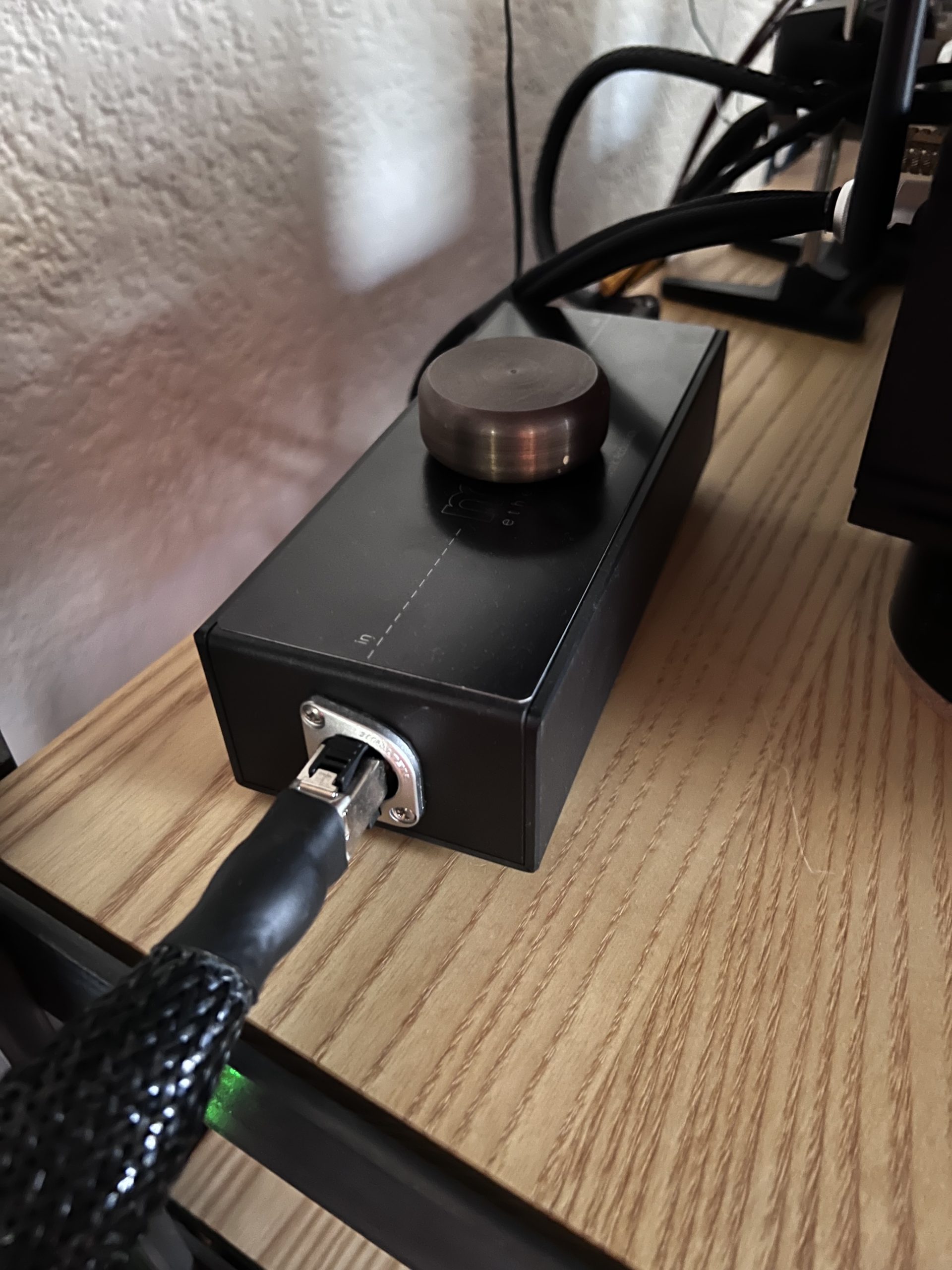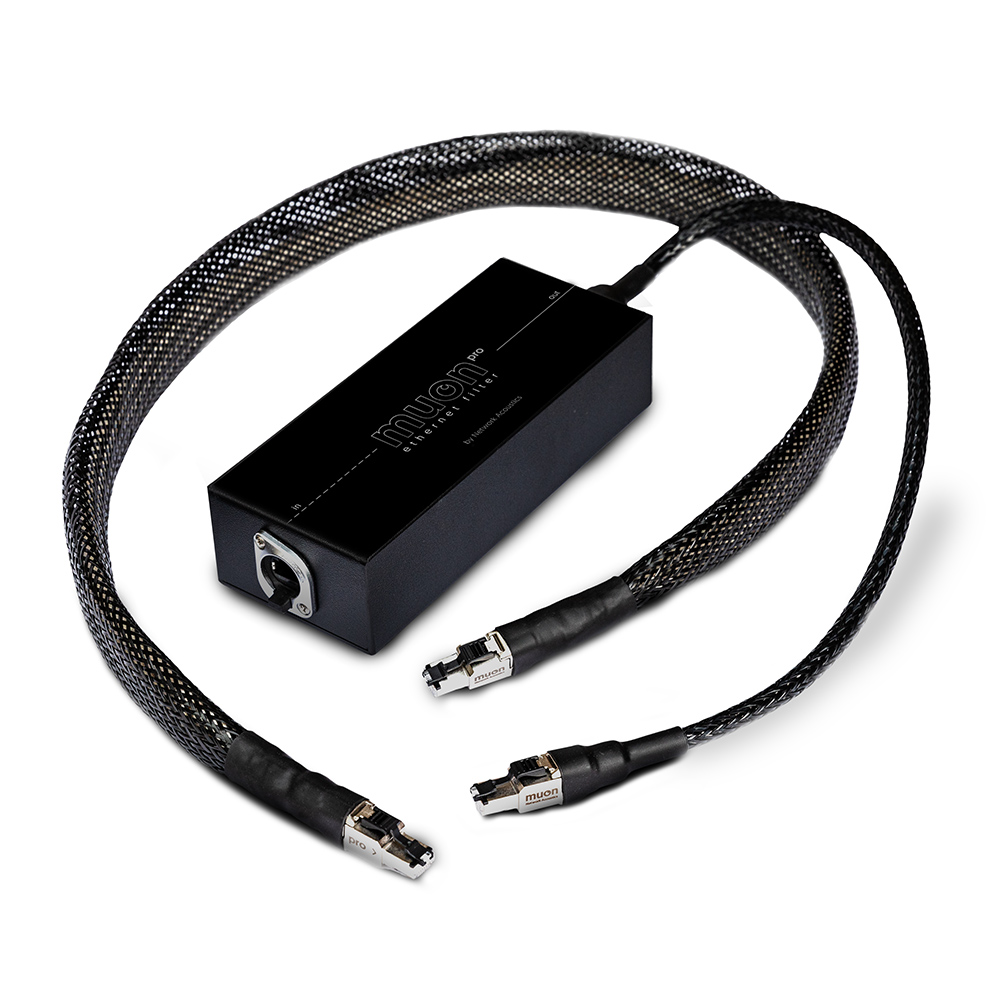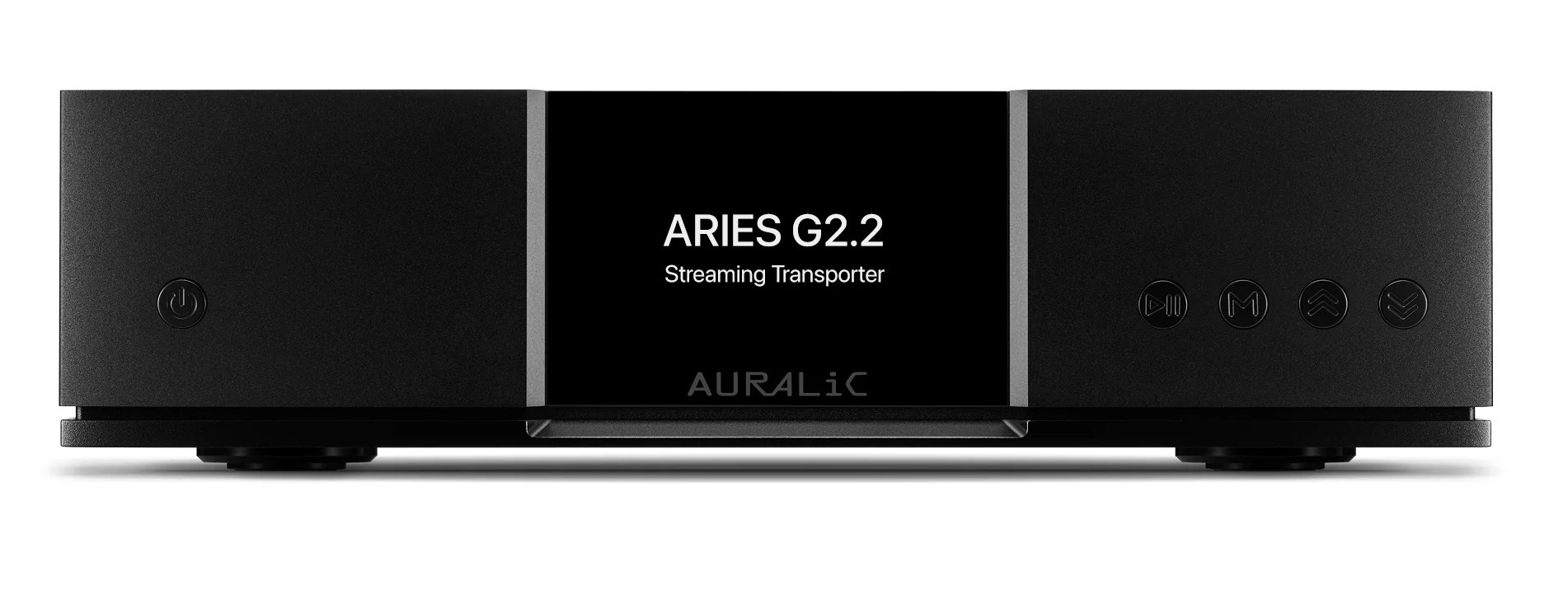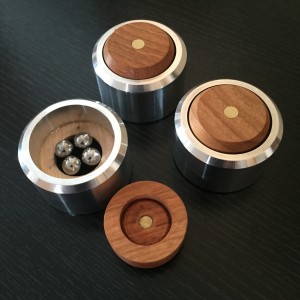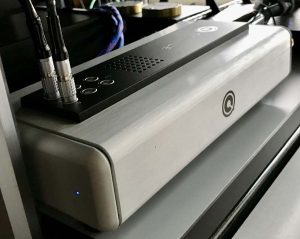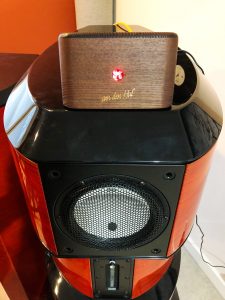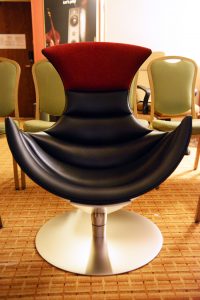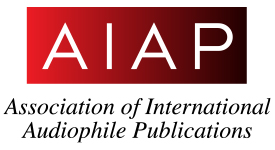So, let me pick up where I left off in my last Audio Ramblings… As I had mentioned in the review of the Infigo cable, we have here the rather expensive switch and Ethernet cables from Ansuz, two items from Synergistic Research (the Black Box and the FEQ Carbon), and the Coherence Systems ADD-POWR Symphony I/O.
Which leads me to…
This.
Now if you know us, and to beat the message into the ground, both Carol and I are way more into the "whole" than the "pieces." That is, it is more about the presentation of the music as a complete entity—how it all works together sonically—than "did you hear that," or "wow listen to the whatever." Yeah, while it certainly fits together, the bits and pieces to make a whole, we really prefer to just put whatever on and listen to the music.
Which does not mean we don't appreciate the bits and pieces. As I said above, they make the whole experience whatever it might be, so yeah… they have a place and importance. But in the end, it is what is filling the room, what is occupying the space here.
Which takes me to...
This.
The Coherence Systems ADD-POWR Symphony I/O ($749.95).
To quote from the Add-Powr site as this is too much for me put into my own words…
Harmonic Resonators
We create algorithm derived em fields, whether conducted or radiated, in order to generate the harmonic energy to resonate electrical signals. The method of generation and conditioning differs between products in that as you move up the product line, the algorithms differ and the power of the harmonic resonance increases with the addition of induction coils. External transformers may be employed to further facilitate low frequency signal transfer as well as to radiate energy fields."
Symphony I/O
We recognize the popularity of computer audio / data streaming devices and the potential of signal degradation from such systems of various cable interfaces. Instead of developing another network switch we viewed the problem from a position of harmonic resonance. A signal pass thru design provides a means to apply harmonic resonance directly to the data stream itself.
The objective was to generate as much of a harmonic resonant field as possible within a small enclosure. Three different field intensity levels are available.
- 2 Input / Output sets of RJ45 ethernet ports
- 2 Input / Output sets of USB A/B ports
- Harmonic resonator with 11 dual energy antenna coils
- Harmonic intensity mode switch (low, medium, high)
- Simple plug 'n play installation
- Medical grade external IEC power supply w / dc adapter
- Sturdy .063" aluminum case: 5" x 6" x 1.5"
- Weight: ~ 12 oz.
- $749.95
Recommended Uses:
Placed in close proximity to network router / media server components
And there is more to read HERE.
And so here is what we did…
We connected one of the network cables (Cardas Clear) to the input and another to the output—these going from the Integrita C4 NAS from Certon (input) to the SOtM switch (output) and damn if the music did not take on a more dimensional quality. More air or space around the music while being more there. Not dramatic, but not really subtle. We both heard it. Now this is with the I/O set to High. On the low setting I found the music a bit brighter, more detailed perhaps, but not as engaging. When I say "not as engaging" what I mean is that there was now a sense of added details that were not part of the whole, but more of now being there; more apart from the whole. You can get more "detail" or resolution by either taking away whatever was clouding or obstructing things or by simply boosting something to make it more evident. No idea what the I/O was actually doing here.
Regardless, this made me listen more to the bits and pieces and not the music. Not a bad thing as eventually one becomes accustomed to changes, and so it might be a good thing. Thinking, "Let's go to 11 and either it gets better or worse" and… "Okay, this is good." It got better. Better in a way good way that was simply engaging as the music was a whole. Kind of like… everything meshed together to become a very musical whole. Nothing was being presented as a separate bit or whatever… no it sounded better and all was in harmony. Just better. Subtle to a degree, but clearly audible. More presence, space, dimensionality.
In this situation the I/O was sitting between the NAS and switch on the shelf, perhaps 6-8 inches from each. Okay, but in comes the A2 switch from Ansuz and their Ethernet cables—stiff and rather long at 2m compared to the way flexible 1m Cardas—and this is not going to work all that easily if I were to swap out the Cardas for the Ansuz. Too old, too tired, not as flexible (both the cables and me) and too much arthritis in my thumbs. Just can't get stuff connected as easily as I could when, say I was 10 years younger.
Let's just bypass the idea of Ethernet cables in/out and place the unit on the Ansuz and see what happens. After all, the Ethernet cables are all connected to the switch, so it is like they are connected to the I/O.
Oh, this works too. Same changes, same differences. Okay, you can use this simply as a passive device in a way where placement near or on a digital device will reward you with more space and there-ness. Or if need be, run cables through it to get that change. Or run a whole bunch of cables through it! I have yet to try running multiple cables through the unit—is somewhere in the plans—but feel it will simply become adding more of what it does on top of what it did. Too much? Complementary? I don't know. Give me more time to sort that out.
I can't tell you why the I/O does what it does to the music we hear here, but only that we heard a difference with it. I know it is not changing or improving the digital packets, that it can't do. But for whatever reason, applying a harmonic resonance directly to the data stream itself seems to affect the signal with respect to what is coming out of our speakers. There is a change to the music, as a whole, and one that we liked.
A case of anticipation/expectation bias? Maybe. Yeah, we read that X will improve something and so you put it into the system and damn… it does what they said it would do. Or it made some difference—of which could be a better or worse difference or just a difference; neither worse or better.
But then there is the other side of the coin. Your anticipation/expectation bias is that it can't or won't make a difference and low and behold… you don't hear a difference. Or that any difference is going to be for the worse.
But then… after years and years of listening to gear, music, changes to the room, different rooms, different systems—let's just say experience— and so while no one is perfect, the idea of anticipation/expectation bias becomes less of a thing. You kind of know what is what, what is going to happen or not, what differences might happen; if they do.
For sure we both have enough experience as reviewers that we know components, cables, whatever we toss into the system or room is going to do something. Something that might be audible, and if so, it will be different, and then that this difference might be for the better or the worse. Or just different.
With the I/O it is a better difference.
Recommended. Give it a try. You might hear a difference you appreciate. We did. Buying it too.
Manufacturer's Response
We understand the difficulty of communicating the idea behind ADD-Powr™ technology. In order to assist in this understanding an animation video was created (HERE). ADD-Powr™ simply adds energy to electronic signals by harmonic resonance principles. Electronic signals (audio, video, data, AC power) can be affected showing increased signal-to-noise (S/N) ratios, which is, of course, the measurement of signal integrity.
Harmonic resonance makes audio systems sound more "musical." It is exactly this sense of "wholeness" that Dave and Carol heard.
What you hear is the basis of our claim to be "A New Reference."
Thank you,
Bill Stierhout
Coherence Systems / ADD-Powr™




